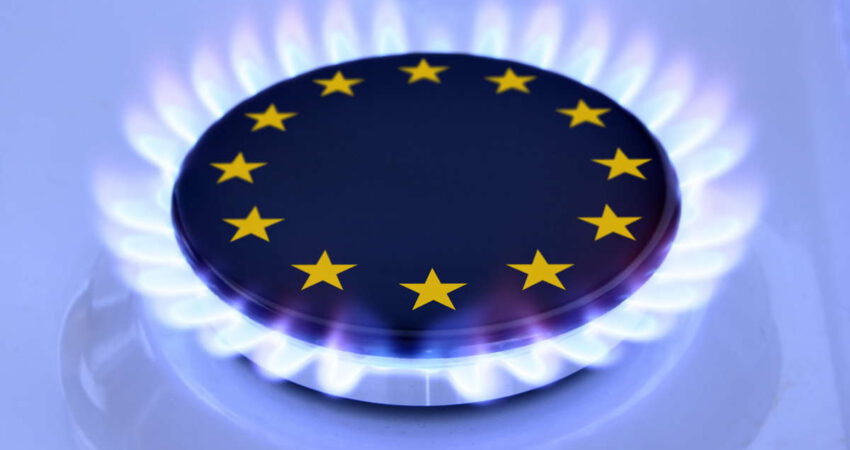It is entirely mistaken to call the present situation a “European gas crisis.” Its significance goes far beyond simply the problems in regulating the gas market. What we are seeing is a full-scale energy crisis, which in fact has wider potential: all segments of European energy have structural problems. The gas power sector has simply served as a focus of inconsistencies that have built up. This has happened above all because it was precisely this field in which the most serious mistakes were made, both strategically and tactically. It is the EU leadership that must take responsibility for price spikes, as well as the individual European countries that are making the most noise about Moscow being behind the crisis while attempting to block the EU from cooperating with Russia on gas. Among these countries is Poland, which is trying artificially and on a non-market basis to develop a geo-economic base for its Three Seas Initiative macro-project. They also include Ukraine, which is trying by hook or by crook to induce EU countries and Russia to pay for the modernization of its gas transport structure and the Baltic countries, which are implementing an anti-Russian economic policy. The main issue lies in the extent to which European countries will be able to limit the scale of situational destabilization and create at least a medium-term, but preferably a long-term framework for the development of the market. In many ways, nearly all the economic inconsistencies of the European Union that have accumulated in recent years have been demonstrated in the current phrase of the European energy crisis.
The European gas market phenomenon has been determined by three factors:
- The dominance of medium-term over long-term planning in circumstances where the possibility that the “worst-case scenario” will occur is denied. Clearly, a strategic miscalculation took place in Europe in relation to rates of growth of energy consumption and the possibility of replacing legacy forms of generation. Due to its qualitatively hybrid composition the gas power sector has simply turned out to be the most sensitive to the lack of a long-term development plan. As a newly identified factor let us note the European energy market’s great susceptibility to investment manipulation in one of its segments. This testifies to the weakness of “insurance” elements of the market, which as a rule are usually performed by other sectors of the market. The European Union however bet on an increase in suppliers, which in this case did not work. In the short term, this vulnerability cannot be eliminated, even if significant resources are concentrated. What is required is a review of the entire thinking behind how European energy is constructed and in particular a move away from a forced transition to reliance on renewable energy, which includes ceasing to compel non-regional energy suppliers to comply with this.
- The dominance of European regulatory policy (EU “energy packages”) over national regulation and the existence of a so-called conflict of sovereignties, which has been very apparent during the construction of Nord Stream 2. A recent decision of this kind is that taken by the European Court of Justice in July this year to support Poland’s demand to limit the capacity of the OPAL pipeline connecting Nord Stream and the gas transport system of central and eastern Europe by 50%. This also in part stimulated the instability in Europe’s gas market. Not the least role in the crisis is played by the course the Europeans are taking of forced transition to renewable energy sources, without taking account of whether either the energy system or the economy as as a whole is ready for this.
- The high level of market politicization and direct use of political topics and arguments in economic issues. It must be acknowledged that at the turn of 2018 to 2019 the politicization of the economy became completely out of control, as indicated by the decision of the Stockholm arbitration court in the Ukraine vs. Gazprom case. However, the problem lies in the fact that the crisis brought about by the pandemic has at least partially destroyed Europe’s tools for managing the economy, which had concentrated European efforts in politics.

The system of inconsistencies that had developed in the gas segment of the European market ruled out the possibility of stable medium- and particularly long-term planning. This pre-determined the vulnerability of the system to situational factors and short-term speculation. The combination of factors of various kinds and directions also determined the acute nature of the autumn energy crisis of 2021, whose chief danger is that it could be repeated. The process of recovery in the world economy suggests future growth in gas prices. For now, this growth is notable for its asymmetrical nature: the Asian economies are recovering more quickly than those in the West. The high demand for LNG in Asia will be intensified by preparations for the Winter Olympics in Beijing. And for now, these factors are clearly not being considered a great deal by European institutions. But as a result, at least in the period from 2022 to 2023, the European market is almost certain to lose its status as the most attractive for suppliers. To a significant degree this will take place not for purely economic reasons (the price parameters of the Asian and European markets could in theory be aligned), but due to the “market” being overloaded with political and administrative regulation and unpredictable behaviour by national and European regulators, as has incidentally been shown during the final stages of the construction of Nord Stream 2, when the actions of a number of regulators were openly political and manipulative in nature.
We are seeing the situation being highly politicized and a complete lack of indication that attempts are being made to reconstruct the system of strategic management of the European market. The main question is to what extent European elites possess sufficient wisdom to remove politically motivated restrictions on the presence of Russian gas in the European market within a relatively short timeframe – not situationally, as a crisis measure, but in the longer term. The opinion is forming in expert circles that both at the level of supra-national organs and at the level of individual countries, the European Union is not ready to normalize relations with Russia. But unless it does, moving to a new level of partnership in the field of energy will be impossible, although a certain increase in gas supplies is possible. Plans to use Ukraine’s gas transport system also do not appear particularly logical, especially taking into account the astronomical sums that will be required to restore it and support its operation. The pace of re-orientation towards Asian markets of both Russian and American gas supplies is clearly underestimated in Brussels.
A strategic threat to the European energy market is the development of areas with differing levels of energy security. The European countries that have been working with Moscow and have long-term contracts with Gazprom are getting through the crisis period with fewer losses than countries whose energy supply has turned out to be mainly tied to the spot market. This is not to mention the medium-term competitiveness of industry and agriculture, which will clearly be greater for those who have long-term contracts. It cannot be ruled out that the governments of these countries will try to strengthen their special energy supply regimes, having protected themselves from the politicized decisions of European organs. This will cause a further increase in contradictions within the EU, with predictable attempts, once more, to blame these on Russia. The vicious circle of mutual accusations will gain fresh impetus.

Several conclusions follow from the situation that has developed:
- The possibility remains of new crisis surges, which as well as being deliberately contrived may occur naturally. The artificial barriers in the EU that restrict the supply of Russian gas to consumers may lead to an increase in gas being taken from European underground gas storage in the current winter. It cannot be ruled out that these surges may begin at the turn of the year as we move into 2022. The situation with volumes in storage facilities is regarded as pre-critical but capable of rapidly developing into a crisis. If official data are to be believed, the shortfall in filling storage facilities compared to last year stands at 20.5 billion cubic metres (bcm) of gas. 28% – or 18.6 bcm of the 66.2 bcm of gas taken from European underground gas storage last winter – has not yet been replaced. Of itself this is not a direct threat, given that it will be possible to slightly reduce the rate at which gas is taken from the storage facilities thanks to the reduction in energy consumption by enterprises that have become unprofitable. But it will create immense opportunities for short-term price manipulation. It should be noted that Russia will not be able to increase gas supplies to Europe in a relatively quick timeframe in the current regulatory circumstances, especially since the forecast is for a cold winter in Russia itself. The key factor creating instability is the impossibility of even medium-term planning for gas supplies to Europe, resulting from the politically motivated and operationally chaotic actions of European institutions.
- The “crisis of rebalancing” is sluggish in nature. The period of high volatility in the European gas market may persist until the end of the winter, but the aftershocks could last longer, depending on whether the “China first” principle persists in the United States’ gas exports. We cannot rule out the possibility that in individual periods of extreme weather, spot prices for gas at the TTF hub in the Netherlands could exceed their already record values, which at their peak reached a speculative level of over $2,000 per thousand cubic metres and with real external situational stimuli could be even higher. Attempts in the media to lay the entire responsibility for gas price spikes and the energy crisis exclusively at the feet of Russia appear to reflect the lack of any ideas within European institutions for the structural transformation of the market. The current situation, which is having a negative effect on European consumers, industry, and goods, is a consequence of Brussels’ policy of focusing on American LNG as a crucial component of its energy mix. This has been short-sighted given both the LNG volumes that the United States was potentially able to supply to Europe and the extremely short-term commercial nature of American gas exports. One can only predict that this will increase irritation in Russa, where there is increasing talk of the impossibility of changing this approach. Tellingly, several experts have started to test the waters on formulating an idea for the United States and Russia – jointly and without consulting their European partners – to externally “manage” the European energy market in order to avoid future fluctuations, which present a high risk to global economic stability.
Thus, solving the problems of Europe’s energy security purely through tactical and situational solutions is becoming impossible. The time has come for a thorough review of approaches to the mechanisms for guaranteeing energy security at both a European and an individual country level, and which involves global players: the United States and Russia.

